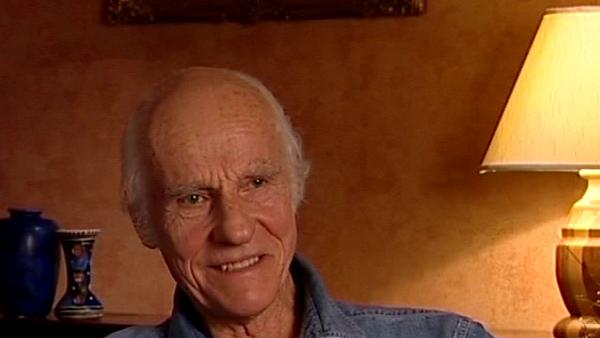NEXT STORY

Shooting Gandhi in anamorphic
RELATED STORIES

NEXT STORY

Shooting Gandhi in anamorphic
RELATED STORIES


|
Views | Duration | |
|---|---|---|---|
| 121. Ben Kingsley's performance in Gandhi | 107 | 02:01 | |
| 122. Difficulties with the Louma crane in Gandhi | 109 | 02:41 | |
| 123. The collaboration between British and Indian crews on... | 61 | 01:33 | |
| 124. The success of Gandhi at the Oscars | 73 | 02:40 | |
| 125. The recreation of Gandhi's funeral | 56 | 02:04 | |
| 126. Shooting Gandhi in anamorphic | 85 | 01:07 | |
| 127. Disadvantages of shooting anamorphic | 119 | 01:28 | |
| 128. Monsignor: A scandal in the Roman Catholic Church | 43 | 02:26 | |
| 129. The Survivors | 36 | 04:24 | |
| 130. Donald Sutherland's and Faye Dunaway's demands on Ordeal by... | 194 | 05:40 |


The dialogue scenes in Gandhi were... were all filmed with one camera, although we had a second camera we never tried to get a second camera in when we were doing intimate scenes. And it was only when we came to the bigger scenes with crowds that we introduced extra cameras. And, you know, some of them would be getting cutaways of the crowd, some would... the two principal cameras would be getting different sizes on the principal, that was usually Ben of course, so that one could get the maximum amount of... of coverage without having to repeat scenes that were quite complicated to set up. I mean, in particular the funeral scene which Ronnie Taylor shot, I think they used about nine cameras including a Steadicam because there was only going to be one... it was only going... only be done once, in one day. And they did it on the... the anniversary of the independence of the nation so they already had... it was a public holiday. And thousands and thousands, I think about a quarter of a million people turned up to watch the re-enactment of Gandhi's funeral and it was re-enacted in great detail, with the... all the... the army and the air force and all the dignitaries and all the leading political figures. Another thing that was interesting is that the main characters were all cast to be good lookalikes. Nehru and... and Jinnah, who had a streak of white hair, they were all cast to be as close as possible to... to the real... real people. So the film... we tried to make it as authentic as possible and a lot of this library material that we watched was... was of a great assistance in this. And the salt march, the great salt march to the sea where he goes to take salt, we... we relied very much on news reel material for the, you know, feeling of that.
Billy Williams, London-born cinematographer Billy Williams gained his first two Oscar nominations for the acclaimed “Women in Love” and “On Golden Pond”. His third nomination, which was successful, was for the epic “Gandhi”. He was President of the British Society of Cinematographers, and was awarded the Camera Image Festival’s Lifetime Achievement Award in 2000.
Title: The recreation of Gandhi's funeral
Listeners: Neil Binney
Neil Binney began working as a 'clapper boy' in 1946 on spin-off films from steam radio such as "Dick Barton". Between 1948-1950 he served as a Royal Air Force photographer. From 1950 he was a Technicolor assistant technician working on films such as John Ford's "Mogambo" (photographed by Freddie Young), Hitchcock's "The Man Who Knew Too Much" (Bob Burke), and Visconti's "Senso" (G.R. Aldo/B. Cracker). As a camera assistant he worked on "Mind Benders", "Billy Liar" and "This Sporting Life". Niel Binney became a camera operator in 1963 and worked with, among others, Jack Cardiff, Fred Tammes and Billy Williams. He was elected associate member of the British Society of Cinematographers in 1981 and his most recent credits include "A Fish Called Wanda" and "Fierce Creatures".
Duration: 2 minutes, 5 seconds
Date story recorded: September 2003
Date story went live: 24 January 2008